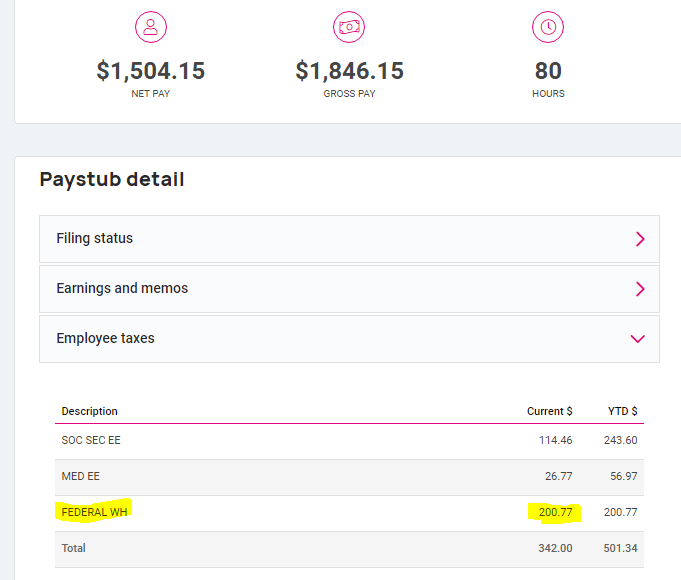
Whether it’s a company tradition or not, an end-of-year bonus is something on everyone’s mind. If you’re an employer planning to give out a bonus, chances are you will wonder how much you can afford to give your employees. Once you get to that number, it makes sense to ask, “How can I make sure my employees keep as much of their bonus as possible?”
What is a bonus?
In general, a bonus is any amount of money that an employer chooses to give to their employee in addition to their regular earned wages. Often, they are used to incentivize or reward employees for working above and beyond their typical job description. Sometimes they are baked into the compensation plan from the onset of the job offer, and other times they are given out entirely at the employer's discretion. The more complicated part comes when it's time to give the employee the bonus. Curious about how bonuses and commissions are different when it comes to payroll? Learn more here.
We are looking specifically at bonuses that are paid out through a check to an employee. We cover the best way to ensure your employees keep the most they can and show a way you can go above and beyond for a team that went above and beyond for you.
How federal withholding affects employee bonuses
When we talk about keeping as much of the bonus as possible, what we are up against is the tax calculation, more specifically, the calculation of the federal withholding. Most of the time the largest portion that gets withheld is the federal withholding. We aren’t going to talk about state withholding because each state is different, but sometimes state withholding could be sizable too. (Looking at you California).
There are three ways to legally calculate federal withholding on a bonus. The first way is using the frequency of the regular paycheck. Second is 22% of the total bonus. Third, and the best way, use the frequency of the bonus check. Let’s break that down.
You may be wondering why frequency matters at all. With out getting too far in the weeds, frequency is important because how often you get paid has a big impact on your annual income. Someone who gets two $20,000 checks in a year should be taxed the same as someone who gets four $10,000 checks. Below you see an image of fake check information for my model employee, Tony Test. Tony earns $48,000 a year, and he is paid bi-weekly, 26 times a year.
Each paycheck, Tony nets $1,504.15 from his gross wages of $1,846.15.

So, let’s look at what happens when we enter a $1,000 year-end bonus for Tony, taxing the bonus at his regular pay frequency. Pay attention to the amount his net and Federal withholding increase.

Notice that we more than doubled the amount that is being withheld from Tony for Federal tax. That $1,000 bonus became $703.64. While it’s still a nice bonus, there is a simple way that employers can allow their employees to keep much more.
If you remember from before, the IRS thinks that Tony is going to gross his check amount 26 times a year. The calculation was made thinking that he was regularly earning $2,846.15. For a year-end bonus, we can make the calculation happen on an annual schedule. The federal withholding can be calculated more accurately, and your employee will be happier with the amount that they end up with.

As the image shows above, a correctly scheduled bonus check nets out to $923.50, a whopping $219.86 increase with no additional charge to the employer. That amount of money can have a huge impact on employee satisfaction, especially during the holiday season.
The gross-up option
A final way to enter a paid bonus is to use a gross-up option. If an employer wants to make sure that their employee nets a specific amount from a bonus, they choose to use the gross-up option. This option calculates what the gross amount needs to be in order to end up at the desired net amount. Here is what it would look like if Tony’s employer wanted to write him a gross-up year end bonus for $1,000.

With this option, you will notice that the gross amount has increased, which in turn will increase the amount of employer taxes on this bonus. The gross-up option is more costly to the employer, but it’s an option to consider. There is something psychologically gratifying about seeing the full $1,000 on a check, especially if the bonus was listed as an incentive for extra work. It’s likely your employee was daydreaming about that thousand-dollar check while they were putting in the work, so to see that become a reality could really cement the connection between the reward and the effort. With this option, the employer must ask themselves: “Is the extra $91.92 of taxes I have to pay a worthwhile investment for this clear-cut connection?”
Be smart about your bonuses. Talk to a payroll provider
Bonuses are a great gift to give your employees. As you can see, however, there are ways to make your gift stretch further if you are intentional about it.
Talk to your payroll provider about the options that you have available to you given your payroll system. When it comes to giving out a bonus, knowing how your system works, and what options you have can make a huge difference. Don’t settle for what you have been doing. Know what’s possible and strive to make the best choice for both you and your employees.
Topics: